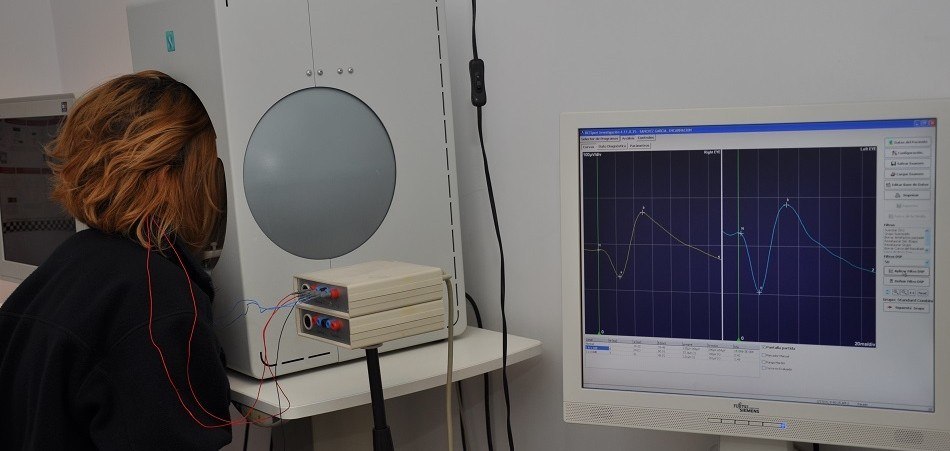
The electrooculography or electrooculogram (EOG) is an electrophysiological test used to evaluate the functional status of one of the layers of the retina, the retinal pigment epithelium, the alteration of which is related to some retinal diseases.
The electrooculogram is mainly used to clear up or confirm a diagnosis. It is usually done when a dysfunction of the macula is suspected, especially Best’s disease (macular dystrophy).
The patient must come on the day of the test without having applied any cream and/or make-up on the face and without contact lenses in order to obtain the results properly.
In addition, before the test is performed, a few drops will be applied to the patient to dilate his or her pupils.
It is not recommended to drive after the test, since the drops applied to dilate the pupil can cause blurring and visual impairment for 6-12 hours. After this time the dilation and its effects are recovered.
The electrooculogram is a test that consists of placing four small electrodes near the muscles or around the eye being examined in order to measure its movement, as well as an electrode at the forehead or near an ear. Then, the device will carry out a recording that consists of collecting the electrical responses obtained by a back and forth movement of the eye between two luminous markers.
Therefore, by means of this examination, it is possible to study the variation of the repose potential between the retina and the cornea according to different light conditions regulated by the optometrist in charge of monitoring the test.
The duration of the test is approximately 45 minutes. This period includes one readjustment in the dark and one in the light.
Once the data has been collected, the ophthalmologist will be in charge of interpreting the results and communicating them during the next visit.

No, since it is a non-invasive technique that does not contact the eye, it does not cause any damage. However, the blurring caused by the pupillary dilation drops may produce visual discomfort for approximately 6-12 hours.
Yes, it is better to be accompanied by another person, since after the test you will have blurred vision due to the temporary effect of the pupil dilation drops.
It is not necessary to fast for the test.
The results are obtained at the same time the test is performed. If a medical report is required from an ophthalmologist, the test report will be sent to you within a few days.
The optometrist is the one in charge of performing the test and has the knowledge to confirm its correct performance. The one who must interpret and report the results obtained is the ophthalmologist, who will do so taking into account the clinical context after a complete anamnesis and examination of the patient.
The normal values in this test are not exact numbers. They cannot be determined by interpreting the test alone. The ophthalmologist interprets them in the context of the patient’s symptoms and ophthalmologic examination.
No, after the test it is not recommended to drive, since the effect of the dilating drops (some blurring, glare) will not yet have disappeared. However, the patient can take a shower after the electrooculogram.
Contact us or request an appointment with our medical team.